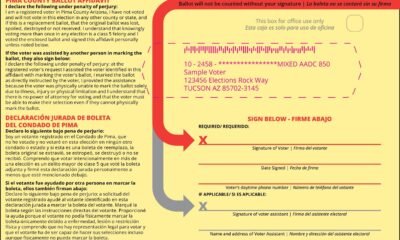arizona
Pima County’s ‘Truth in Taxation’ Hearings: A Missed Opportunity for Transparency

The Pima County Board of Supervisors is set to conduct three public hearings focused on anticipated property tax increases. Scheduled for June 17, these sessions will address potential hikes tied to the Flood Control District, the Library District, and the county’s primary property tax.
State law mandates these hearings whenever local governments propose property tax levies that exceed previous collections—notably attributed to rising property values rather than new construction. The law defines a tax increase as any rise in the total amount of property taxes collected, irrespective of the actual tax rate.
Interestingly, while Pima County’s overall tax rate is decreasing, officials must present these hearings in a manner that suggests active tax hikes. In contrast, the Pima Community College District aims to secure more funds through property taxes while reducing their rate, resulting in higher collections due to increased property values.
Meanwhile, the City of Tucson plans a genuine increase in primary property taxes. For homes assessed at $100,000, the primary property tax will rise from $43.11 to $44.53, generating an additional $1.2 million. This reflects a real tax increase—unlike the scenario where rising property values alone result in increased tax bills.
Despite the hike in primary taxes, Tucson will simultaneously lower its secondary property tax rate, reducing it from 0.6034% to 0.5510%. Consequently, the total property tax owed to the city will decrease from 1.0345% to 0.9963%.
This method of labeling tax situations can seem absurd. For instance, if the City Council had to inform residents of sales tax increases whenever product prices rose, the logic would appear inconsistent. Under the current legislation, even if tax rates are lowered, hearings must still be held if property values rise sufficiently to boost revenues.
The Pima County Assessor’s Office monitors property value increases, while property prices are determined by the free market. As home values rise, the county collects more without changing tax rates. Advocates argue that this contradiction in tax increases can lead to confusion among constituents.
Moreover, heavy discussions revolve around the Laffer curve concept, which posits that lower tax rates can lead to higher revenues. Historically, this notion has deep roots, extending back to early thinkers like the Islamic scholar Ibn Khalduhn. Balancing tax policies remains a pressing challenge within Pima County and beyond, inviting critical evaluation of what constitutes a genuine tax increase.


















